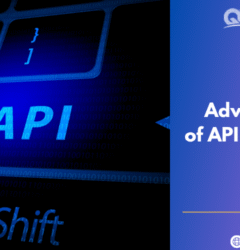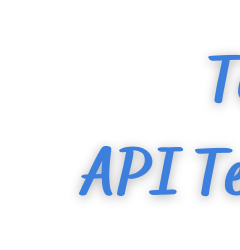21 Jul

The process of evaluating APIs’ security, scalability, functionality, and performance is known as API testing. It involves sending requests to several endpoints and determining whether the responses match what was expected. The “happy path” scenarios and negative cases are tested as part of this procedure to ensure the proper security checks are in place.
To ensure that the API can handle usage in the real world, testing the API by simulating anticipated user journeys and server loads is essential.
An ordinary system determines the blend of endpoints, the number of endpoints, the standard outcomes, the ideal reaction time, and the rules for an ineffective reaction. Preferably, you ought to have a few experiments that break down your APIs against every conceivable situation.
The Importance of API Testing:
APIs are used by many businesses to generate revenue and provide seamless customer experiences. APIs, on the other hand, occasionally fail to perform as intended. API failure can occur for various reasons, including an unresponsive server, invalid inputs, insufficient permissions, and more.
Subsequently, testing is a non-debatable stage in the Programming interface of the executive’s cycle. Before making APIs available to end users, it assists in identifying any flaws and inconsistencies.
Testing improves the quality of your APIs in the following ways:
Enhanced dependability: Through functional testing, reliable APIs help reduce downtime, reduce errors, and enhance the API’s overall quality, resulting in a better user experience.
Improved security: By preventing unauthorized access, API penetration testing aids in determining whether an API is secure and makes it possible to safeguard a company’s data assets better. It can assist with shielding your business and clients from digital dangers and information breaks.
Increased efficiency: APIs’ efficiency is enhanced by performance testing, which also aids in determining whether or not they can withstand high loads and challenging conditions. It guarantees that your APIs will not frequently malfunction.
Types of API Testing:
Leading Programming interface testing at different phases of the Programming interface lifecycle, including the planning stage, improvement stage, and post-organization, is a best practice that gives a few advantages.
You can ensure that the API satisfies business logic and requirements by testing it at the design stage, thereby enhancing the API’s overall design. During the improvement stage, testing can check that the Programming interface gives a fitting reaction to asks for and sticks to quality principles, permitting you to recognize and determine issues at the underlying stages.
After deployment, testing aids in the identification and resolution of issues that may have been overlooked during earlier API development stages.
Let’s examine the various kinds:
- Functional Testing: Utilitarian testing is tied in with confirming that a Programming interface does what it should do. It involves testing an API’s input and output as well as its behavior under various conditions. Moreover, it incorporates checking boundary approvals for the rightness of information types and values, sorting legitimate or invalid demands, and making sure that fitting mistake messages are sent.
There are various classes of utilitarian testing also, including:
- Unit testing: It includes testing one part of a Programming interface, like a particular technique or capability.
Integration Testing: It determines how an API interacts with other systems or components.
System testing: It determines how an API interacts with other systems or components.
2. Error handling testing: It guarantees that an API can deal with all errors. This includes testing for unanticipated conditions and scenarios like invalid or missing input values.
Performance Testing: Execution testing is a basic move toward guaranteeing that your Programming interface is fit for taking care of high loads under requesting conditions. It looks at a variety of factors to determine how well an API works, such as capacity, scalability, and response time.
API performance testing can include the following:
- Load Testing: Examines how well an API performs when subjected to anticipated loads, such as the number of simultaneous requests or users.
- Stress Testing: tests the performance of an API by gradually increasing the load to determine the API’s maximum capacity.
- Endurance Testing: Tracks a Programming interface’s exhibition over a significant period, like a few hours or days, to guarantee it can deal with the normal responsibility over a drawn-out period.
- Spike Testing: ensures that the API can handle sudden increases in workload.
- Response time testing: verifies that an API meets the anticipated performance goals by measuring its response time to requests.
3. Security testing: Programming interface security testing confirms that your Programming interface can shield delicate information and frameworks from unapproved access. Testing for vulnerabilities and API authentication and authorization mechanisms are all part of security testing.
API security testing can include the following:
- Authenticity testing: checks the API’s authentication mechanisms to make sure they are safe and won’t let anyone in. For instance, protection against hackers who attempt to steal sensitive data by pretending to be another user.
- Authorization testing: tests the Programming interface’s approval systems to guarantee they are filling in as expected and forestall unapproved admittance to safeguarded assets. This means that only their data should be accessible to each user (granular row level security).
- Penetration Testing: uses a cyberattack simulation to find API vulnerabilities that a potential attacker could use. Specialized algorithms are used in this testing to look for code injections and stop requests before they can harm the server.
Conclusion:
We will complete the task. Indeed, it is very extended and informational, right? How about we think back?
- Pick a Programming interface testing apparatus.
- Make vital assets for the test climate, like test data sets, mock administrations, and testing accounts.
- Recognize the experiments that should be computerized and layout input boundaries like headers and questions, as well as experiments.
- To test various API endpoints, write short and long scripts with assertions.
- Create test cases using the supplied parameters to run the API’s tests.
- Create a test report and store it in the repository of your project.
- To validate the API, run the test cases and examine the results.
- Automate the API testing.
- Survey the test discoveries and screen the Programming interface consistently
We hope that our API Testing tutorial was helpful to you. Although API testing can be difficult, it is doable with the right tools and best practices. So, if you follow the advice in this article, you will quickly become an expert at API testing!
Preeti works as a QA expert in Salesforce and other commerce and E-learning at QACraft. She is a computer science engineer with a degree and has 3 years of experience in Manual testing as well as Automation testing. In her free time, she loves to sing.
Related Post
Leave a Comment Cancel reply
Categories
- Agile Testing
- Alpha Testing
- Android App Testing
- API Testing
- Automation Testing
- Banking Domain Testing
- Beta Testing
- cloud testing
- Corporate Life
- cross browser testing
- Cypress Testing
- desktop testing
- Difference
- Domain Testing
- E-commerce Website Testing
- E-learning App Testing
- End-To-End Testing
- Functional Testing
- Game Testing
- Healthcare Domain Testing
- Integration Testing
- Interview Questions
- ios App Testing
- Jenkins
- JIRA
- Katalon
- Manual Testing
- Mobile App Testing
- Monkey Testing
- Non-Functional testing
- Performance Testing
- Postman
- Regression Testing
- Salesforce Testing
- Sanity Testing
- security testing
- Selenium Testing
- Smoke Testing
- Software Testing
- Static Testing
- Test Case
- Test Environments
- Test Scenario
- Test Script
- TestRigor
- Web Application Testing
© Copyright 2025 QACraft Pvt. Ltd. All rights reserved.
Contact : +91 9157786796




Preeti Singh